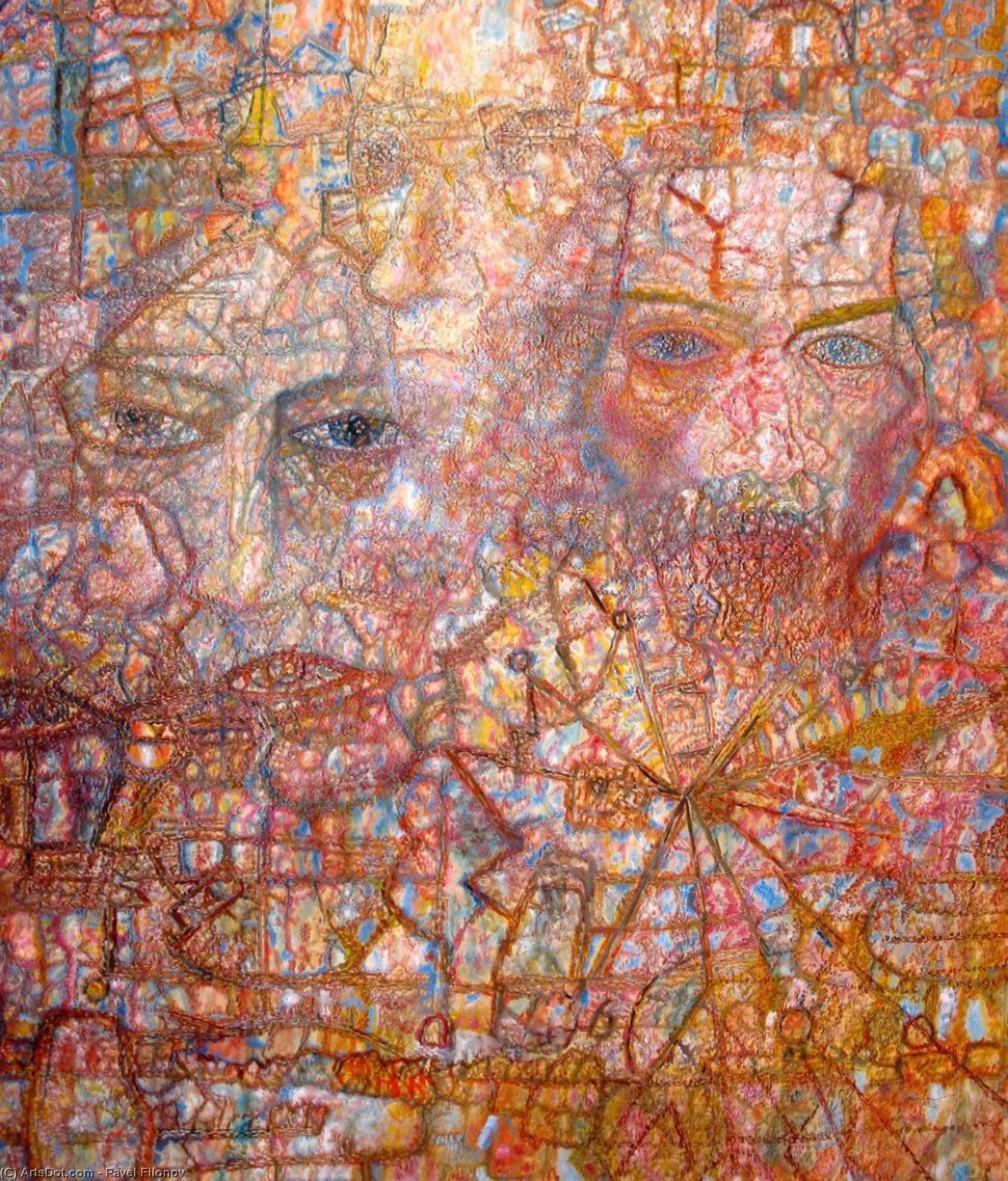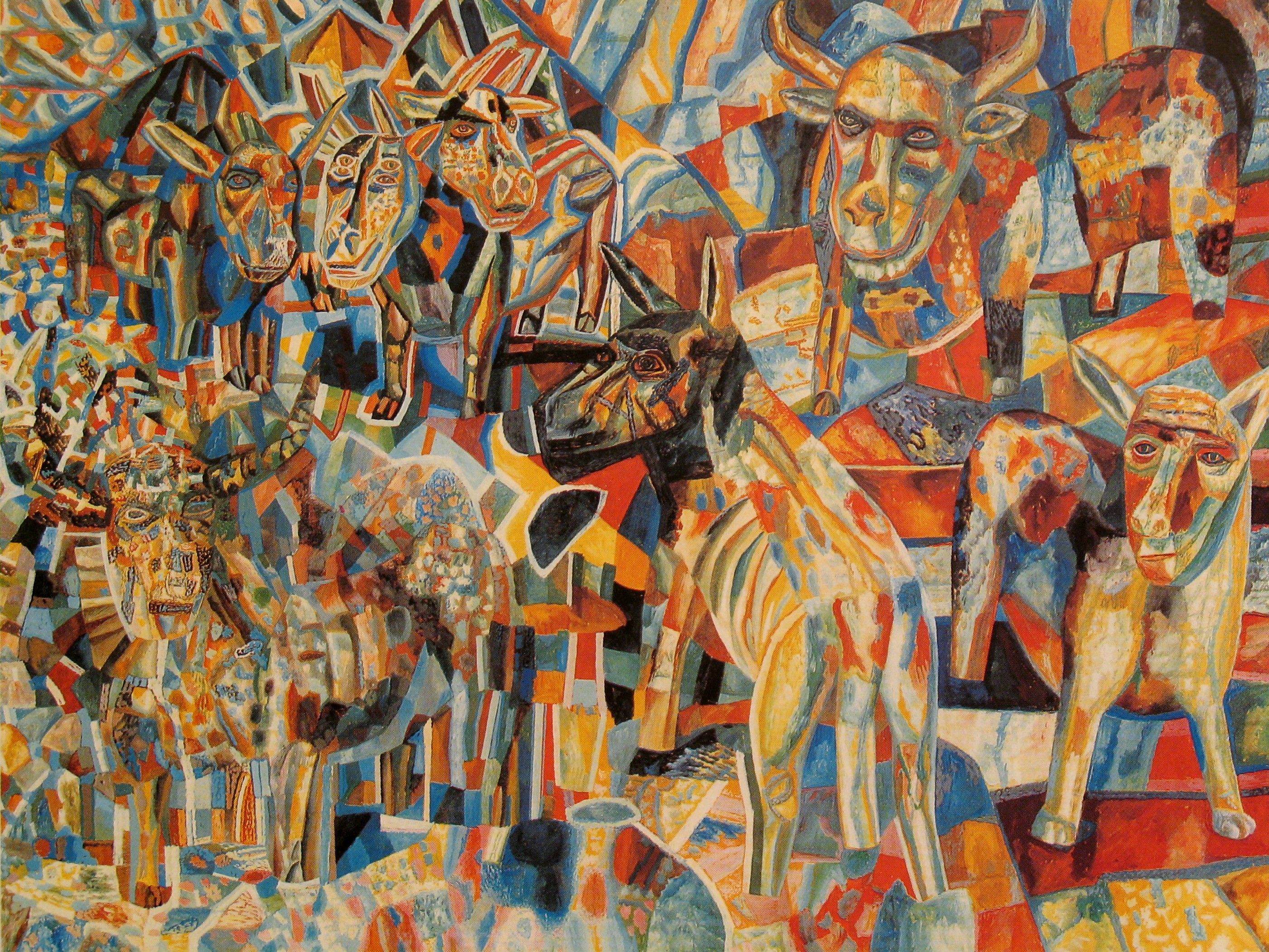Expression is extraction, pulling intimacy outwards and setting the self as fuel for creation. Memorable art is rooted in the quest for identity; it seeks to intertwine creator and creation so deeply as to make an artist’s style as unique as the artist. I can imagine Picasso’s face; I can imagine my face painted by Picasso.
Nietzsche stated that of all that was written, “I love only what a person hath written with His Blood.” This brutal image on the self-combustion of creation reflects both the importance of individuality and the philosopher’s dislike for spiritual-abstractions—his belief in all bodily and physical things—an attitude summarized by Oscar Wilde: “Those who see any difference between soul and body have neither.”
Within this blood flows iron born upon the death of a distant star—would the artist have to search for identify through space, or peek into the atom; how close is too close and how far is too far to find identity?
Zoom into a swirling heritage of code and you’ll find your primal design. Yet, if DNA means identity, twins would share the same indissociable one. Further along the scale, it doesn’t get any clearer than to find an immediate physicality of identity: considering cells as the body’s building blocks, it would made identity an unstable entity, with their every appearance and disappearance.
A complex orchestra of glands and hormones conduct the body machinery in the rhythm of respiration to the circadian metronome, dilating vessels and contracting valves, to a composition dictated by an infinity of stimuli and perceptions—the experience of listening to this internal music and the variations unfolding in this harmony of life, is called Emotion. Emotions are the internal perception of the corporeal frame. Our feeling of the body responding to sight, the trigger to process fear, the drive to engage in running, all are emotions. Without this internal listening to the body’s orchestra, cognition would be colorless: your heart doesn’t pump because you’re scared, the expression of fear results in your heart playing a concert with adrenaline and all the hormones conducted by the sight of a lion.
Emotions aren’t an overarching, independent entity, they are rooted in the bodily and physical stuff. When Tolstoy said that “art is to express emotion,” I wonder if he was aware of how much the viscera in our gut influenced feeling states. Even personality itself is restrained by this relation: recent studies show a deep relation between the microbacteria we carry and being prone to anger, hostility, and low moods; the presence of the hormone cortisol correlates to stress, tendency to low levels generate self-discipline and ambition, while low heart rates generate fearlessness and impulsivity.
If the search for individuality in personality translates to variations in bacteria, then we are left only with memories and experiences to define a self worthy of artistic value. Yet these aren’t free from the affection of emotion either, every part of the process calls a feeling to it’s side, tricking and manipulating memory. One example is the tendency to amplify the brightness of past memories beyond their actual lived experience, leaving us with a history of ourselves rewritten by a mechanism too wide to trace back.
Chaos. No matter where we choose to look, identity will be an infinite sum of elements ever farther from my control. Every part breaks down into another relative part in a random process. But look into the painting: no other collision of circumstances would result in that exact piece, it marks the only point in which it’s existence stands—unity, beyond where it fractures, along the crossing ties that bind eternity to a single point in time. Search there and you might find the reflection of a face—it will say: “I’ve existed!”
- Artur Deus Dionisio
More Expressionists' works you will find on our Instagram.


 Pavel Filonov
Pavel Filonov